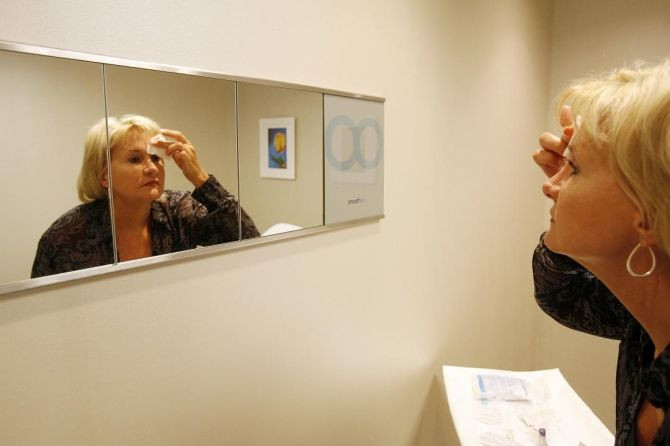Study: Facelifts Will Make You Look 7 Years Younger

A face lift can rewind time and make a person look more than seven years younger, according to a new study where volunteers were asked to guess the ages of patients who had undergone cosmetic operations.
The study also found that the reverse aging effect was most pronounced in pictures of patients who had undergone the most cosmetic surgical procedures.
Study volunteers, consisting of first-year medical students, estimated patients to be an average of 8.9 years younger than their actual age after being shown photos of 60 people who had cosmetic procedures. However, researchers noted that before surgery, the volunteers had perceived the patients to be 1.7 years younger, producing an average age difference of 7.2 years after plastic surgery.
This effect was "unrelated to the preoperative age of a patient and unaffected by other variables that we investigated," study authors Nitin Chauhan and Peter Adamson of the University of Toronto in Ontario, Canada, and Jeremy Warner of the NorthShore University Health System in Evanston, Illinois wrote in the study.
The number of cosmetic surgical procedures rose five percent to 13.8 million in 2011 since 2010, marking the second straight year that plastic surgery procedures, both surgical and minimally-invasive, increased despite the nation’s economic difficulties, according to statistics from the American Society of Plastic Surgeons, Medical Daily reported last week.
Cosmetic procedures ranging from breast augmentation to facelifts have all increased since 2011, with breast augmentation maintaining its rank the most common procedure and facelifts replacing tummy tucks as the fifth most popular cosmetic operation for the first time since 2004 after nose reshaping, liposuction and eyelid surgery, investigators had said.
Researchers from the latest study said that many patients undergo cosmetic facial surgery not only to improve their appearance but also as an attempt to “turn back the clock,” and that their findings provide objective evidence of the success of cosmetic surgery and may potentially help doctors when counseling patients.
"Our findings offer some objective sense as to our success with surgical intervention as facial plastic surgeons and provide us with more evidence to give patients when formulating their preoperative expectations," the authors explained.
Sixty patients, 54 of those were women, who underwent aesthetic facial surgery between January 2005 and December 2008, between 45 to 72-years-old. Patients were divided into three groups, 22 had a face and neck lift, 17 had a face and neck lift and an eyelid lift and 22 had a face and neck lift, eyelid lift plus a forehead lift.
The pictures were shown to 40 first-year medical students and researchers found that the average raters’ responses indicated that patients who had one surgery, the face and neck lift, looked 5.7 years younger, patients who had two procedures looked 7.5 years younger and after three surgeries, patients looked 8.4 years younger.
“Our data demonstrate a significant and consistent reduction in perceived age after aesthetic facial surgery,” the researchers concluded.
The financial disclosure section of the study showed that one of the study authors, Adamson, is a medical consultant for Allergan Inc. in Canada, and Bloomberg reported that Allergan, based in Irvine, California, retails the wrinkle therapy Botox, which had generated $1.42 billion in 2010 revenue.
The findings were published online Tuesday in the Archives of Facial Plastic Surgery.



























